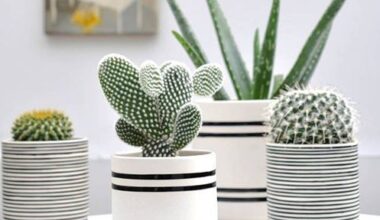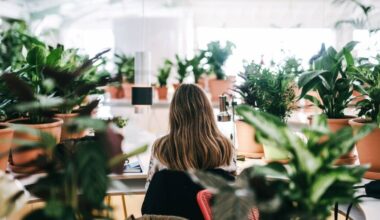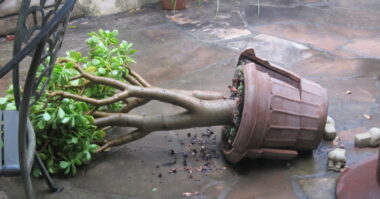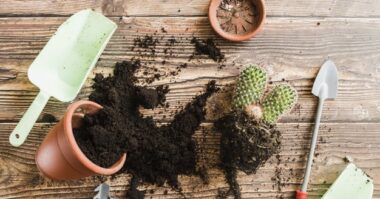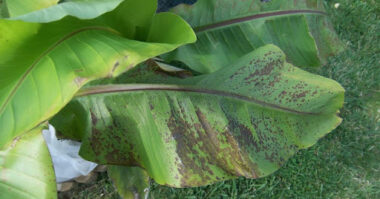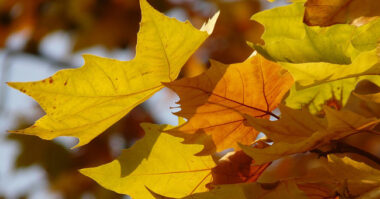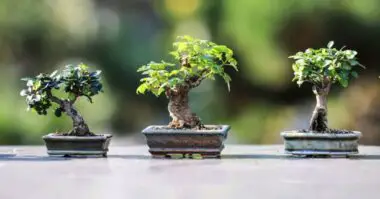The bamboo is a very easy plant to cultivate, in full ground or in pot, and appreciated for its persistent foliage. It happens however that its leaves turn yellow, which is most of the time more unsightly than serious.
We explain the actions to be taken if your bamboo yellows depending on whether it is planted in the ground or grown in a pot.
Contents
How to revive a bamboo that turns yellow in the ground
If your bamboo is grown outdoors, the yellowing of some leaves is usually not serious as long as the culms (stems) retain their color and new shoots (shoots) continue to appear.
1. You have just planted your bamboo
Newly planted bamboo is under physiological stress which can manifest itself in the yellowing of some leaves. This period can last up to a year after planting.
Do nothing more than water regularly throughout the first year (20 liters of water every 15 days). Indeed, whatever the season, bamboo needs a lot of water to settle and then to be able to draw water from deep down.
2. Your bamboo yellows before the natural fall of the leaves
Even though bamboo has evergreen foliage (green all year round), it is absolutely natural for it to renew itself: in spring, new shoots and leaves appear while some old ones turn yellow and fall off.
3. Your bamboo lacks water in case of prolonged summer drought
After the first year, bamboos are strong enough to do without watering, except in case of prolonged summer drought.
In this case, water your bamboos copiously: 20 liters once a week, during the dry season.
4. Your bamboo is exposed to an unusual wind
Some varieties of bamboo are perfectly wind resistant and form excellent windbreaks. Others are less resistant and it can happen that a temporary excess of wind can cause a dryness of the young shoots, which turn yellow.
In this case, do not intervene, the bamboo is not in danger. In the spring, prune the most damaged parts with pruning shears.
5. Your bamboo is sick
Mites (red spiders) can attack bamboo leaves, causing them to dry out and turn yellow. Treat them with an acaricide product, preferably organic.
6. Your soil is insufficiently fertile
The bamboos appreciate a rather rich, neutral soil with an acid tendency, while also supporting a calcareous soil. If the leaves of your bamboo turn yellow and all other causes have been eliminated, your soil may not be fertile enough.
In this case, an addition of compost or manure will be welcome.
How to revive a lucky bamboo that turns yellow in a pot
Pot-grown bamboo has much more reason to yellow than bamboo grown in the ground. But the cure is almost always within your reach.
1. You have just planted your bamboo
Your newly planted or repotted bamboo undergoes physiological stress that can manifest itself in yellow leaves. Water regularly while the plant gets used to its new container and its new substrate.
2. Your bamboo turns yellow before the leaves naturally fall off
Despite the evergreen foliage, the old leaves turn yellow and fall in spring to make room for new shoots.
3. Your bamboo is poorly watered
Water stress, whether from insufficient or excessive watering, is the most common cause of yellowing.
Insufficient watering: Pot-grown bamboo requires particularly high water inputs: if the plant lacks water, the leaves tend to curl up and turn straw yellow.
Over-watering: Too much water or stagnant water can also be harmful: in this case, the foliage takes on a rather yellow-brown appearance.
4. The substrate of your bamboo is insufficiently draining
Bamboo appreciates moist, but well-drained soil that retains the right amount of water. If, when you water, the water tends to stay on the surface for a long time, it is because your potting soil is not draining enough. It’s best to change it.
5. Your bamboo needs fertilizer
Pot-grown bamboos deplete the soil: bring them fertilizer twice a year, in spring and autumn (lawn fertilizer, preferably organic, is very suitable).
6. The pot of your bamboo has become too small
Bamboos, especially tracing (invasive) bamboos, have a root system that grows quickly, so they can quickly become cramped in their pot.
In this case, repot your plant in a larger pot, possibly after dividing it: you will get two pots.
7. Your bamboo is weakened by the wind or the cold
Dried by wind or cold, the leaves of bamboo placed outside can turn yellow. In this case :
protect your bamboo from strong winds;
protect it from severe cold by wrapping the pot with a piece of bubble plastic.
8. The leaves of your bamboo are exposed too abruptly to the sun
If you grow bamboo indoors and take it out in the summer, the leaves may be burned by too much sun exposure.
In this case, start, the following year, by taking your bamboo out in mid-shade before gradually accustoming it to the sun, while avoiding too prolonged exposure to the scorching sun.
9. Your bamboo is sick
If your bamboo is attacked by mites (red spiders), its leaves will dry out and turn yellow. Treat them then with an acaricide product, preferably organic.
Yellowing in autumn and winter: Lucky bamboo yellows naturally.
In case of severe cold during the winter for a long period of time, the leaves of your bamboo may turn yellow and some may fall off. If you observe that the leaves of your bamboo only turn yellow in the winter, it is probably because of the season.
The yellowing of bamboo leaves in the fall and winter is a natural phenomenon to reduce water loss through perspiration.
Be careful also, because with frost it is possible that your bamboo will suffer from dryness even in winter. When temperatures begin to rise above 0°C, do not hesitate to bring small amounts of water gradually.
In case your bamboos spend their first winter, wait until spring and observe the evolution of the color of the leaves. If they remain yellow, come back to see the other possible causes.
The pot size is too small for your bamboo.
This is the problem with many bamboos planted in pots after a few years. Bamboos are known to be invasive (for tracing bamboos) and to grow very fast.
So it is possible that the rhizome root system of your bamboo has colonized the entire pot. The pot has then become too small for its development.
In this situation, we advise you to re-pot your plant in a larger pot. we recommend that you choose a pot that is at least twice the size of the previous one. This will give you peace of mind for several months or even years.
Your bamboo lacks water
We have seen that prolonged excess water is bad for bamboo. But conversely, prolonged dryness is also bad if the bamboo is too thirsty! Check the humidity of the soil at the foot of your bamboo, especially in summer.
For a bamboo in the ground, in summer, you can put 2 to 5 liters of water per day at the foot of your bamboo depending on the type of soil.
What is the symptom of a thirsty bamboo?
The symptom of a thirsty bamboo that lacks water is that the leaves fold up and begin to curl up on themselves.
You may not have time to water your bamboo regularly. In this case, it is advisable to put at least one mulch mulch on the ground. This protective layer will keep the soil moisture in the soil longer. A final solution would be to invest in automatic watering equipment.
How to prevent a Lucky Bamboo from turning yellow?
Now you know what to do, now we will address the question that often remains unanswered: “If my bamboo becomes yellow again how do I do it?”.
What we want is that you spend as little time as possible taking care of your plants while keeping them as long and healthy as possible. So we’ll see about that now!
1. Anticipated the arrival of pests on a Bamboo
Predicting the possible arrival of pests is always better than having to find a solution in a hurry when they are there. Just give your bamboo 5 minutes a day, and you will save time and maybe even money over time if your plant dies.
To avoid having red spiders it’s strai, take care of your bamboo. Moisten it and take the precautions as said before or the spiders will come back to remind you that you did not take care of it well enough.
With the cochineal, you can’t do anything apart from looking at your plant carefully every day. It is only once present on your plant that you can chase it away with the treatments listed above.
2. Prune a Lucky Bamboo which dries
Nothing is easier than to cut a lucky bamboo that turns yellow. Just cut off the yellowed parts at the base and your bamboo will grow back on its own. Isn’t life beautiful?!
Be careful, do what is necessary to find out where this yellowing comes from otherwise it will start again indefinitely.
3. How do you know if a Bamboo is dead?
If all the above methods fail to resurrect it, your poor bamboo is surely dead. But before throwing it away you can still do something.
Lucky bamboo can sometimes die from the inside, the best thing to do in this case is to cut off a part of it and look inside. If it is still green you can apply our advice, in case it is black or completely empty from the inside you can throw it away.
Summary
My bamboo is turning yellow: A common cause for concern among bamboo lovers. Rest assured, most of the time, the yellowing of bamboo is nothing serious.
An indoor bamboo that yellows often means that it is weak, the choices to be made to care for it are very delicate, we explain how to proceed.

